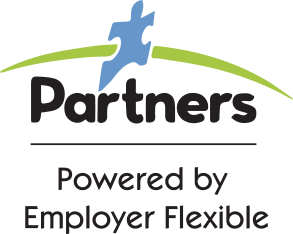Assembling Your Team: Utilizing Talent Assessment to Hire “A” and “B” Players
Assembling Your Team: Utilizing Talent Assessment to Hire “A” and “B” Players

In a perfect world your hiring managers would only select top talent to join your organization.
These are not perfect times, however, as HR teams must navigate one of the tightest labor markets in memory while being buffeted by external factors such as the pandemic and rising inflation which have changed both workplace and salary expectations.
In this challenging environment, assembling your team with “A” and “B” players is harder than ever. While business leaders never want to see their positions go unfulfilled, settling for less-than-stellar hires can be a costly move.
“Skilled candidates are at a premium these days, and the cost of a bad hire can be as high as 1.5 times as an employee's annual salary,” writes Brendan McConnell for Recruitee, which specializes in hiring software.
While some might be tempted to loosen their standard hiring processes, organizations that take advantage of talent assessment tools can gain an edge on adding “A” players to their workforce.
“Well-designed talent assessments can actually help expand your talent pool while increasing the likelihood that you select the right people to fill those reqs, making them a critical part of evolved and creative talent acquisition strategies,” wrote Charles Handler of the Science 4-Hire podcast.
The A-B-Cs of Players on Your Workforce Team
Your workforce can be broken down into A players, B players, and C players on your workforce team.
The Harvard Business Review says that it is important for new managers coming in to assess the talent they are inheriting.
One suggestion is to focus on three dimensions:
- Competence – Does each individual match the competence demands of their role?
- Motivation – Does each member of the team possess the required drive and willingness to learn new capabilities as needed?
- People skills – Is each person capable of building constructive working relationships with their colleagues and you?
Once these questions are answered, you can divide your teams into three groups:
- A Players: Those who excel on all three criteria
- B Players: Strong but not exceptional employees
- C Players: Those that fall below expectations on one or more of the criteria
The goal of any hiring manager is to add A players to your workforce.
Mike Goldman, leadership team coach, author and speaker estimates that most organizations only have between 20 and 25 percent of A Players on their team.
“What are you doing to find and retain more A players?” asks Goldman. “The first step in this process is to define what it means to be an A player in your organization. Is it just about productivity? What about core values?”
Organizations that understand what makes a valuable team member can then utilize that information and apply it to talent assessments in the hiring process. The stakes are high as Goldman estimates that a single A player can be as valuable as three B or C players.
What is Talent Assessment?
Talent assessment can mean different things to different hiring managers.
“In a nutshell, talent assessment is a process that companies use to identify which candidate will perform the best and be the right cultural fit. It aims to predict a new hire on the job’s performance, as well as their retainability in the long term,” writes McConnell.
Talent assessment can happen at different phases in the hiring funnel:
- Pre-screening
- During interviewing
- Post-interview
McConnell says that candidates are typically assessed versus specific criteria and skills that an organization has flagged as being vital to the success of the position.
Talent assessment programs can fall into two main criteria:
- Eligibility: Assesses attributes such as experience, educations, skills, and abilities
- Suitability: Assesses more abstract qualities such as motivation, integrity, interests, cultural and organizational fit, and perceived impact on the current team performance
“Testing candidates and collecting data on their answers is only one part of the equation,” cautions McConnell. “Proper candidate assessment requires recruiters to analyze recruitment trends and case studies within their companies to determine what makes a successful candidate. This data will then inform what criteria are most important, and what the desired benchmarks are for testing.”
This reiterates the point that you must understand what makes an A player in your organization before you recruit a person with the required skill set.
Why is Talent Assessment Important?
McConnell says that if done right, talent assessment can give your company a “distinct advantage in identifying and attracting top talent and avoiding the costs associated with bad hires.”
Agilus Work Solutions says there are several reasons you must use talent assessment when hiring:
- Help you build a highly skilled team – more A players and fewer C players added to your team!
- Remove any unconscious bias in your recruitment process
- Reduce your hiring costs and increase productive time – hiring the right person the first time always saves your organization valuable time and resources.
- Establish strong employee experience from the onboarding process – talent assessments can be used as a springboard for future professional development of your new hire.
Steps (and Challenges) to Implementing Talent Assessments
There are certain steps your company can take to implement talent assessments and some common hurdles to implementation to watch out for.
McConnell says that the most common mistakes companies make when using talent assessments are:
- Assessment programs are not aligned with your company’s overall strategies and goals, and are created without consulting team leaders and hiring managers
- Hiring teams lack the processing power or lack the time to properly analyze the data collected
- Hiring teams using the wrong candidate assessment tool or test for their needs
So how can your company implement talent assessments successfully? McConnell says there are 3 concrete steps to take:
- Know Your Company Needs: Managers, team leaders and hiring staff all need to be working from the same playbook. Hiring managers should understand:
*Job success factors
*Tasks to be performed
*Specific responsibilities
*Key performance factors
*Specific skills
*Any other factor related to job performance
- Choose Your Talent Assessment Methods: Your have a lot of different choices in talent assessment tools including common tests such as:
*Cognitive ability and problem-solving tests
*Personality and psychometric tests
*Structured interviews
*Work samples and simulations
- Use the Talent Assessment and Measure Results: Once you have decided on which talent assessment tools to use, put them into practice and collect results determining their value in helping you identify and hire top talent.
Talent Assessments Can Help Screen In, Not Screen Out
Talent assessments can help companies screen in candidates just as much as they can be used to screen out potential hires.
“Assessments don’t have to be used in a way that automatically screens candidates out of your applicant pool,” writes Handler. “They aren’t always intended to be used as a pass/fail hurdle … assessment results can provide interviewers with signals and cues about candidates’ potential strengths and weaknesses.”
Finally, when choosing between candidates for a position, talent assessment data can be used by the hiring team to help make the final decision.
“With the power of a well-thought-out talent assessment strategy, you can build a more diverse, capable, and viable candidate pool even in a talent shortage,” said Handler.
At Partners HR we can help your organization improve the candidate and hiring experience. Contact us today to find out how our flexible, dedicated services can fit your ever-changing hiring needs.



